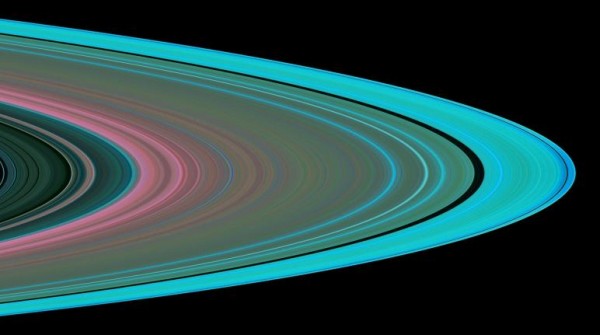By Ana Verayo, | November 03, 2016

The specially-designed Cassini orbits places Earth and Cassini on opposite sides of Saturn's rings, a geometry known as occultation. (NASA/JPL)
Saturn is known for its majestic and mysterious rings. It is the only planet in our solar system with clearly distinguishable rings. Jupiter, Uranus, and Neptune all have rings too, but they are too faint and were only detected in the 1970s. Now, Japanese scientists say that they may have solved the mystery about the origin of Saturn's massive rings.
Like Us on Facebook
The gas giant's rings were first observed in the 17th century during the advent of telescopes and ground-based observatories. In the 1970s, space missions such as the Voyager and Cassini probes confirmed this unique feature by beaming back images of Saturn. However, it has still been unclear how and why these rings formed in the first place.
In a new study, scientists from Kobe University and the Tokyo Institute of Technology used computer simulations to recreate the early formation of the solar system more than four billion years ago.
During this time known as the "Late Heavy Bombardment," there were violent collisions in the infant solar system as protoplanetary objects one-fifth the size of Earth hurtled in the direction of the gas giant planets, most likely from the direction of the Kuiper Belt region beyond Neptune.
With the help of these computer simulations, scientists determined that these objects were reeled in by the powerful gravitational forces of these giant planets as fragments of space rock and debris were captured and ultimately formed an orbit around these massive planets.
Multiple collisions around these orbiting protoplanetary fragments caused them to break down into smaller pieces, as their orbits were transformed into a more circular motion until the current rings took as they do today.
The researchers concluded that the rings of gas giants like Saturn naturally occur from the process of planet formation, suggesting that there are even other exoplanets that may also have rings around them.
This new study was published in the journal Icarus.
-
Use of Coronavirus Pandemic Drones Raises Privacy Concerns: Drones Spread Fear, Local Officials Say

-
Coronavirus Hampers The Delivery Of Lockheed Martin F-35 Stealth Fighters For 2020

-
Instagram Speeds Up Plans to Add Account Memorialization Feature Due to COVID-19 Deaths

-
NASA: Perseverance Plans to Bring 'Mars Rock' to Earth in 2031

-
600 Dead And 3,000 In The Hospital as Iranians Believed Drinking High-Concentrations of Alcohol Can Cure The Coronavirus

-
600 Dead And 3,000 In The Hospital as Iranians Believed Drinking High-Concentrations of Alcohol Can Cure The Coronavirus

-
COVID-19: Doctors, Nurses Use Virtual Reality to Learn New Skills in Treating Coronavirus Patients







